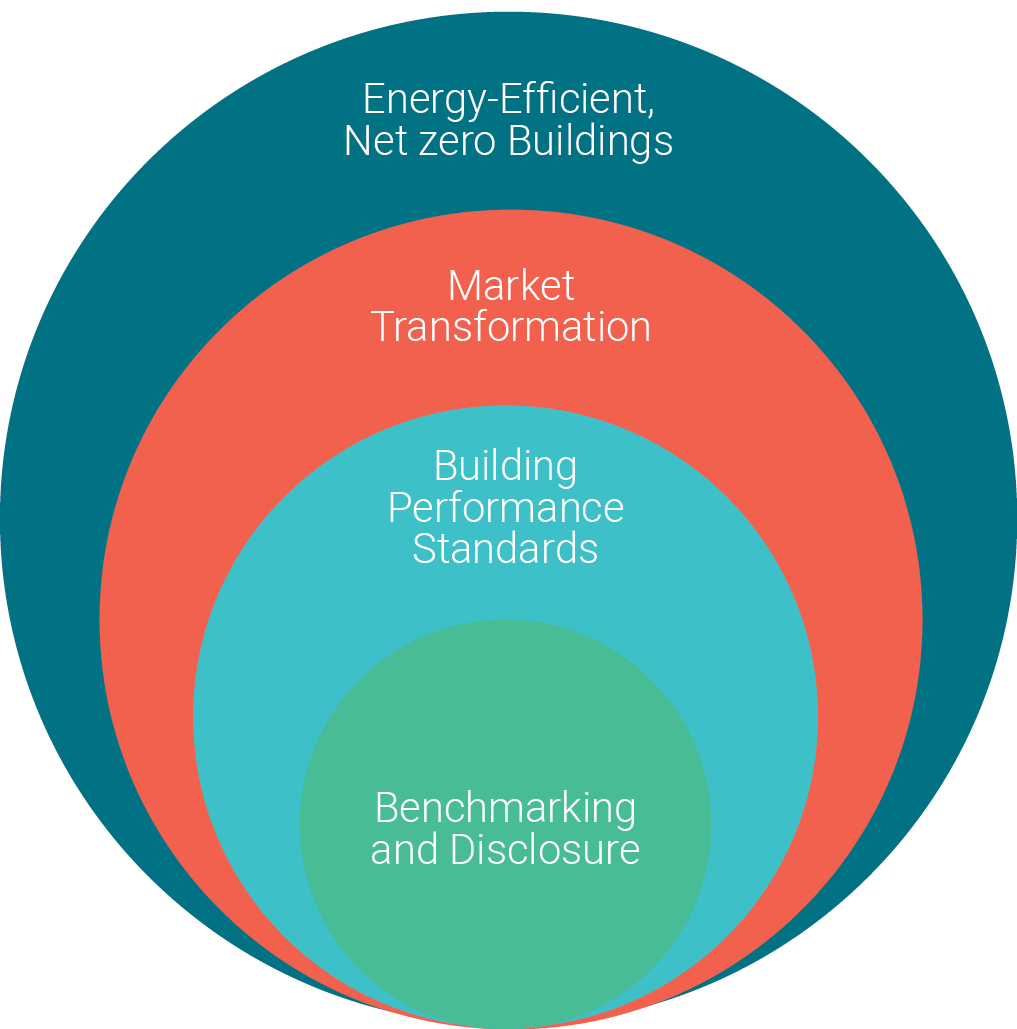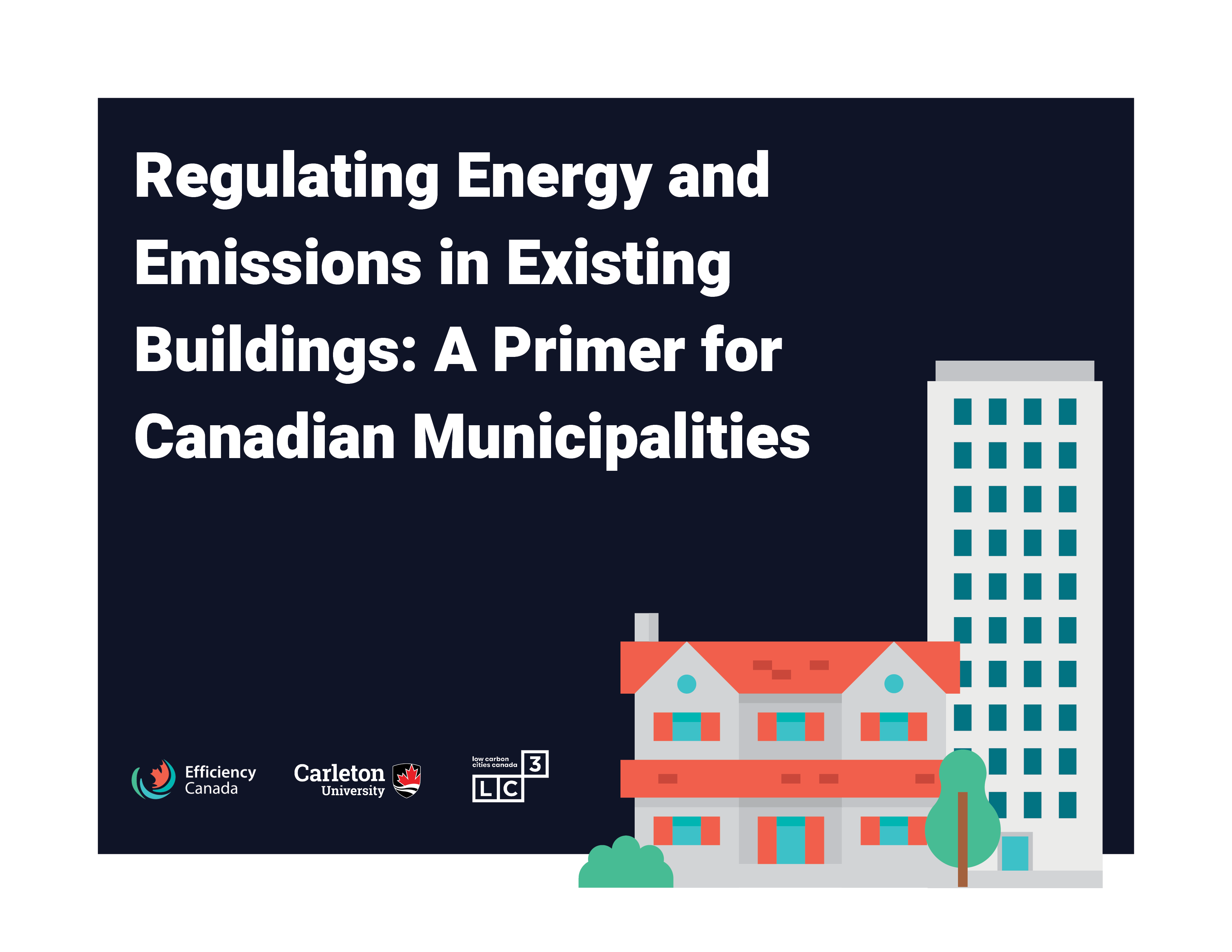Reaching Net-Zero in Existing Buildings
Buildings account for approximately 18% of Canada’s greenhouse gas (GHG) emissions. Most buildings standing today will continue to be in service in 2050. That means Canada needs to retrofit nearly every building currently in use to reach its climate commitments.

Targeting the commercial building sector, about half a million structures, is an effective and cost-efficient strategy for reducing emissions. These commercial buildings emit nearly as much as millions of residential ones.
To achieve this, Canada needs a practical regulatory framework to encourage faster and deeper energy and emissions reductions in its existing building stock. Beyond meeting our climate commitments, renewing our building stock will support the needs of those who live, work, play, and gather in them for decades to come.
Regulating emissions in existing buildings
Canada is working on its first retrofit code, the Alterations to Existing Buildings code (AEB). It’s expected to be released in 2024 and adopted by provinces and territories by late 2026. This is a significant step forward. But requirements will be based on upgrades, repairs or replacements initiated by the building owner. It won’t necessarily increase the demand for retrofits.
Mandatory Building Performance Standards (MBPS) offer a tool Canadian policymakers can use to increase demand for retrofit activity, especially in the lowest performing commercial buildings. This is a necessary complement to the AEB, which is triggered by the voluntary actions of the building owner.
The power of Mandatory Building Performance Standards

Mandatory Building Performance Standards (MBPS) set performance limits for large buildings that are required to be met by a specified date or upon the occurrence of a triggering event, such as during major renovations or building transactions. They are legally binding with the risk of liability and financial penalties for non-compliance. Well-designed MBPS programs are equity-focused, ensuring that benefits are distributed to all.
MBPS build on voluntary measures and programs, such as benchmarking, labeling, financing, subsidizing, and incentivizing energy efficiency. These voluntary measures have been effective in raising awareness about building energy use and emissions but have been largely ineffective in triggering the scale of retrofit activity required to meet our climate commitments in a way that MBPS can.
Canadian Mandatory Building Performance Standards
Your municipality can become a leader in reducing emissions in existing buildings, such as the cities highlighted in the timeline below. These cases draw on the experience of other U.S.-based MBPS programs due to similarities in jurisdictional authority, climate, and building types and codes.
-
The City of Montreal implemented mandatory carbon reporting and disclosure for large commercial and multi-unit residential buildings. The program was created to align with the future establishment of a provincial benchmarking program and signals plans to implement MBPS in upcoming years.
-
The City of Vancouver became the first Canadian municipality to adopt an MBPS program by implementing mandatory energy and carbon reporting, and carbon pollution limits for commercial and retail buildings, starting in 2026.
-
Metro Vancouver indicated its intention to regulate the performance of large commercial and multi-unit residential buildings, including adopting mandatory carbon reporting and disclosure.
-
The City of Toronto will require mandatory emissions, energy, and water reporting, and mandatory building performance standards for large commercial buildings to low-rise residential homes.
Guide: Regulating Energy and Emissions in Existing Buildings

This guide offers municipalities and policymakers insights into the role existing buildings are expected to play in meeting Canada’s decarbonization goals. It highlights two unique tools to regulate retrofit activity in existing buildings: the Alterations to Existing Buildings code (AEB) and Mandatory Building Performance Standards (MBPS). When you download this guide, you’ll also get access to a growing library of resources your municipality can use to tackle emissions in existing buildings.

